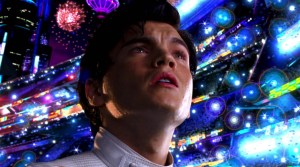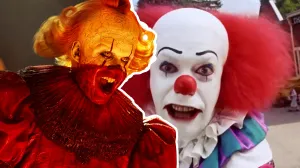
The very first new comic book day in June kicked off summer in a big way for superhero comics this year. We reviewed the debuts of two new series: The Immortal Hulk and Justice League from Marvel Comics and DC Comics, respectively. They were radically different first issues with a lot to offer. As the series have continued throughout the summer months, with The Immortal Hulk on issue #4 and Justice League on issue #6, their initial impressions have been born out. Rather than just leading with their best foot forward, they began in a way that was truly representative of the series to come, marking them as different sorts of hits for each publisher.
Videos by ComicBook.com
These aren’t simply two highly recommended new superhero series though. Together they make for a case study of what their respective publishers are doing best in 2018. Any longtime reader of superhero comics is familiar with the never ending discussion of “DC vs. Marvel,” and examining what works about these series provides a way to focus on their current strengths instead of any new or ongoing pitfalls. They are very different sorts of stories in every regard, including scope, genre, and creators, yet both offer reminders of everything that superhero comics can accomplish. That’s why we are taking a closer look at how this double debut has defined Marvel Comics and DC Comics in the summer of 2018.

The Strange Case of ‘The Immortal Hulk’
There is an argument to be made that The Immortal Hulk is as much a horror comic as a superhero comic. It takes cues from the very first series ever created by Jack Kirby and Stan Lee, as well as classic EC Comics tales with all of their terrifying twists and macabre violence. While the series acknowledges the broader Marvel universe, it has carved out its own little corner where some familiar characters might appear without ever requiring readers to pay attention to the rest of the line. Hulk is truly a monster in this series, one that might be aimed at deserving victims by his alter-ego Bruce Banner, but a destructive force who engages in destruction for his own pleasure nonetheless. It is a strange superhero story unlike anything else at Marvel or anywhere else on comics shelves today.
The series also highlights some of the most overlooked creators in superhero comics today. Writer Al Ewing regularly receives critical praise for outstanding work on series like The Ultimates and Royals. He comes from a long tradition of 2000 A.D. writers making the jump to American superhero comics and delivers on high expectations for creativity and genre-bending stories. Artist Joe Bennett has been a stalwart superhero artist for years, but is delivering career-defining work that will make even longtime readers reconsider his output. His use of panel size and perspective are displaying immense storytelling chops and building a critical reevaluation.
This is what Marvel Comics is doing best right now. They’re standout series are not banner titles with their biggest characters like Avengers or X-Men Gold or the various event series running throughout the year. Their strength lies in comics that do the unexpected and largely avoid the tropes of the superhero genre. The Immortal Hulk is stunning because it breaks fan expectations and seems to be building something altogether new. In that way it ties back to the very first Hulk stories all over again.

From ‘Cosmic Odyssey’ to ‘Justice League’
Justice League, on the other hand, is everything that comic book fans might expect from a Justice League story. That’s not to say that it simply meets expectations either. What has been the crown jewel of DC Comics’ line in the past has regularly failed to meet expectation ever since Grant Morrison and Howard Porter established an exceedingly high bar with JLA at the end of the 1990s. That’s the sort of story that Justice League is succeeding to tell right now though. It features the absolute biggest heroes facing the biggest challenges with increasingly wild solutions and revelations that build across every issue. The series walks a tightrope between a joyful celebration of popular superheroes, one that solicits plenty of laughter as the team does Batman impersonations, and adventures that threaten Earth or the entire universe, with the moon being destroyed in the very first issue. Justice League is the definition of big in superhero comics today.
The series also pushes the biggest creators at DC Comics today as well. Writer Scott Snyder has been on a seemingly unstoppable rise since he relaunched Batman at the start of the New 52 era in 2011. Today he is first among peers when it comes to big names at the publisher. He is joined by an array of the most popular artists in the genre, including Jim Cheung (who left Marvel Comics for the series), Jorge Jimenez, and Francis Manapul on the next big storyline. When new readers walk into a comic book store and ask who’s popular, clerks are likely to point directly at Justice League.
This all fits with a narrative building within DC Comics of an elite line of comics for an elite set of superheroes. Following 2018’s San Diego Comic Con almost every member of the Justice League was either currently paired with one of the most popular creators in comics or would be by the end of the year. DC Comics is focusing on their core strength in the genre and playing up the biggest and most ambitious form of superhero stories possible, all of them built around the events of Justice League.

Peanut Butter and Chocolate
While some readers might gravitate more towards one of these strengths than the other, acknowledging the differences between the best series at Marvel and DC at this moment shouldn’t frame a showdown. There isn’t a clearly superior publisher as both lines are bringing dramatically different strengths to the table. Some readers will love the smaller focus and oddity of The Immortal Hulk, while others will love the enormity and optimism found within Justice League. There isn’t a correct answer between those two recommendations of great comics; it all comes down to individual taste at a certain point.
The world of comics is better off with both series and both publishers doing very different things. Marvel seems to be acknowledging its own strengths with a new Marvel Knights line in the works, and DC is building outs its core titles with the addition of writers Kelly Sue DeConnick and G. Willow Wilson on Aquaman and Wonder Woman, respectively. Neither publisher is flawless, but they are both providing some top-notch superhero comics in very different styles today. That’s ultimately good for everyone, especially readers.








